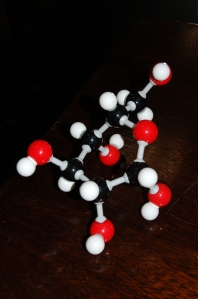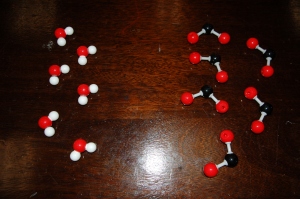We all play games.
It might be just a quick “hangman” to break up a lesson when they’re struggling to remember a key term. It might be biological charades in an end of term session (always a joy to watch them trying to do “endoplasmic reticulum”). Blockbusters is perenially popular – here’s a pre-made grid that will fill in the colours when you click on the block (click once for red, twice for green), Blockbusters Grid though you might want to prepare your words/questions in advance – whenever I try to improvise, my mind goes blank. I like the way that the same answer (e.g. Penicillin) can have multiple questions depending on the age and ability of the group (compare: “what P was the first antibiotic discovered?” to “which P inhibits the synthesis of bacterial cell walls?”).
There are lots of others. A colleague discovered a splendid set of Top Trumps cards on SAPS, featuring plant secondary metabolites. The LD50 data was particularly intriguing. I sometimes get classes to design games for homework – a board game based on Metabolic pathways, perhaps. And there’s the transcription/translation race…
But if I had to choose just one game to use with a class, it would be this version of Biological Articulate. I like it because it’s brilliant fun, it’s very simple (just needs a bit of preparation time), every student has to be involved (not true for some of the games mentioned above) and every student, every student, absolutely loves it. Does it have educational value? Judge for yourselves.
This is based on a class of 20 students.
Make a list in Word of all the new biological vocabulary they’ve covered in the year/term/topic. 40 to 50 words is a minimum. Add some random spoilers (“I love sausages”, “my cousin is an elderberry”, “One Direction are rubbish”). Format it as 2 columns in Calibri 24 font with a line break between each word/phrase. Print it all off and make 5 photocopies.
Take one of the copies and cut out each word on to a separate strip of paper. Put them all into a large, brown envelope. Repeat with the remaining 4 copies. This will take a while, but now you’re ready for action. You should have 5 large brown envelopes, each with the same collection of words/phrases.
In the lesson, ask the class to divide into pairs, encouraging them to pair up with someone they feel a special, mental affinity for, someone with whom they feel almost telepathic. Pick a pair at random and ask them to challenge another pair. These 4 students now need to sit, one at each side of a desk, facing their partner. Set up all the other students in the same way. With a class of 20, you’ll have 5 desks with 2 pairs on each.
Now explain the rules. Each table has an envelope (brandish envelope theatrically). In the envelope are many strips of paper with words or phrases on them. The envelope will start with one person on the table. When you shout, “Go!”, that person removes one strip of paper and attempts to describe the word/phrase to their partner. If their partner says the exact word/phrase on the strip, put it on the desk (it’s a point to that team) and take out another one. After one minute, you will shout, “Change!” (and trust me, you’ll need to shout) and it passes to the person on the right. After 4 minutes, everyone on the table will have had a turn describing, and every person will have had a turn guessing. The winners (obviously) are the team with the most correctly guessed words.
Rules!
- You can’t do rhymes (e.g. “it sounds like “bell””).
- You can’t do spelling (e.g. “C, E, L, L…”).
- You can’t do foreign language equivalents (e.g. “C’est un cell….”).
- You can’t use any of the words in the phrase (e.g. “washing machine” cannot be described as a machine that does the washing).
The job of the pair waiting their turn is to observe and enforce the rules.
And it’s wonderful. The shyest, quietest student gets stuck in. You and they will cry with laughter at some of the frantic descriptions and the increasingly noisy frustrations when students fail to get something obvious. You have to keep a close eye on the clock in order to yell “change!” at the right moment (or you can project a big countdown clock on the board http://www.online-stopwatch.com/countdown-timer/), but it’s otherwise pretty bomb proof. And they will spend the rest of the year asking when they can play the word game again.
So I like it for all those reasons. But I think it works at another level too. They can’t do well at the game without both recognising the word/phrase and understanding it. It also forces them to try and explain it in their own words. Similarly, you can’t recognise the word without understanding the description and knowing the vocabulary. And the combination of noisy anonymity and competitiveness means they’re not afraid to get it wrong, or clam up because they feel the weight of people looking at them.



